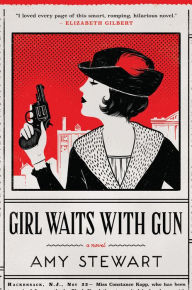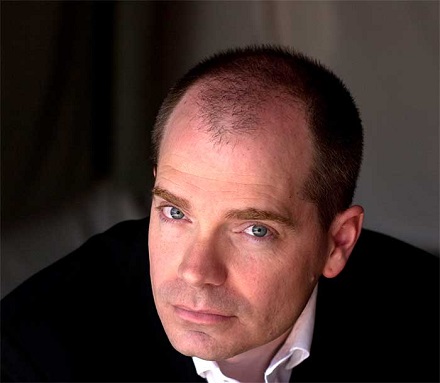
Christopher Farnsworth is best known for his series about Nathaniel Cade, the president’s vampire. The novels in that series include Blood Oath, The President’s Vampire, and Red, White, and Blood. The Cade books were twice finalists for the Goodreads Choice awards, have been translated into nine languages and published in over a dozen countries, and optioned for film and television.
Farnsworth’s latest novel is The Eternal World, which follows a group of 16th-century conquistadors who discover the fountain of youth. The fountain of youth allows these soldiers to live forever, and become ruthless businessmen.
Here's a quick question-and-answer interview we recently had with Farnsworth.
From vampires who work for presidents to conquistadors who live forever, what draws you into these worlds?
It’s like the truth is out there, and just waiting for us to stray off the path so it can have a chance at us.
In The Eternal World, one character says you have to have something to live for. What would you live for?
For most of us, our kids are the only thing that’s going to outlast our expiration date. I’m trying to make sure that whatever they still carry around from me is the best that I have to offer.
Why the fascination with immortality, which seems to be an ongoing theme?
I live in LA, so I already see people who act as if they’ve got an unlimited supply of tomorrows. Maybe it’s just the Botox, but not many of them are smiling.

Your novels also show the downside of immortality.
At first, it seems like immortality would be a never-ending party—that’s certainly how some of my characters treat it. But without those nagging reminders of a finish line off in the distance, I think we'd become less human.
What would you do if you could live forever?
I’d love to believe I would travel from continent to continent, righting wrongs, learning languages, and watching history as an eyewitness. But as much as I want to be Connor MacLeod of the Clan MacLeod, I know I could do all that stuff already. Nothing is stopping me. I choose to do other things instead. It’s a matter of priorities. We’ve all got to decide how we’re going to spend our time, and there are no refunds at the end. If I had forever, I don’t know how I’d decide what was most important. I’m bad enough as it is about procrastinating. Without a deadline—literal or otherwise—I might put things off for centuries.
Any movie options for The Eternal World?
The book actually started as an idea for a movie, from the producers Tom Jacobson and Monnie Wills. Now that it’s being published, they’ll be pitching it to studios.
What kind of research did you do into the science that you realistically use in The Eternal World?
I was lucky in that there are already people much smarter than I am who think they are on the verge of a cure for old age, and there are great writers who have made their efforts comprehensible. And I’m also lucky in that my time as a reporter trained me to download a bunch of material fast, and then condense it into a quick summary. I read a lot of technical articles and papers on the Web and did my best to get the core concepts from them. Of course, it helped that if I ran into questions that had no answers, I could just make them up.
You started as a journalist, was being a novelist always part of your plan?
Always. Since I was five years old, I knew I wanted to be a writer. I went into journalism because it seemed like the best way for me to do that and to pay the bills. For a while, I thought reporting would be enough. But inevitably, like an addict, I started writing fiction on the weekends. I sold a script to MGM, and made the leap to screenwriting. I flailed away at that for a few years, and then, when the WGA writers’ strike hit, I took an idea I had for a script and turned into a book. It sold, and I finally got to write novels for a living. In other words, I’ve been very lucky.
Tell us your background.
Here’s the quick bio: I was born and raised in Idaho and attended the College of Idaho, where I majored in literature and history. I was an investigative and business reporter in Idaho, Arizona, and California before selling my first script, The Academy, to MGM. Then I began writing novels with the President’s Vampire series, which was optioned for film and TV and published in a dozen countries. I now live in Los Angeles with my wife and two daughters.
When not writing, what do you do?
Honestly, not very much. I do a lot of dad stuff: take my daughters to school and the Santa Monica Pier, read books to them, and try to be there every night for dinner. Then I sit on the couch and read or watch TV.
I do plan to get a life sometime, honest. It’s on my list.
Tell us something that readers don’t know about you.
I am a great-nephew of Philo T. Farnsworth, the inventor of television.
Who do you read?
Right now, I’m reading The Dark Net by Jamie Bartlett. I just finished Crooked by Austin Grossman. Also, Tod Goldberg’s Gangsterland, David Graeber’s Debt: The First 5,000 Years, Lavie Tidhar’s The Violent Century, Neil Gaiman, Lee Child, John Connolly, Charlie Huston, Nick Harkaway, John Burdett, James Rollins, James Ellroy, Richard K. Morgan, Claire North, Ian Tregillis, Charles Stross, Terry Pratchett (really, really going to miss him), Tim Powers.
And comic books. A lot of comics. Favorites right now are Chew by John Layman and Ninjak by Matt Kindt.
If you were not a writer, what occupation would you follow?
I ask myself that question all the time. As soon as I come up with a good answer, I will let you know.


 MS: You've been a busy author, but until now, no fiction. How did the Mycroft Holmes project come about?
MS: You've been a busy author, but until now, no fiction. How did the Mycroft Holmes project come about? KAJ: I don’t know if it’s harder or easier, but it’s certainly different. [Coauthor Anna Waterhouse and I] were more concerned with big world events rather than solving a single crime. So in that sense, there might be more moving parts. There was certainly a good deal of research.
KAJ: I don’t know if it’s harder or easier, but it’s certainly different. [Coauthor Anna Waterhouse and I] were more concerned with big world events rather than solving a single crime. So in that sense, there might be more moving parts. There was certainly a good deal of research.

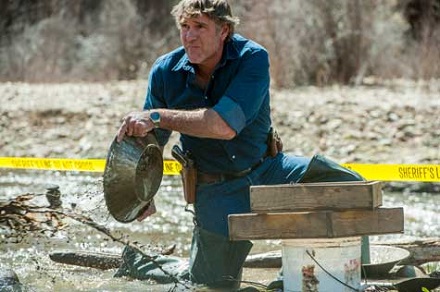

 Mystery Scene Concentration -- Easier version!
Mystery Scene Concentration -- Easier version! 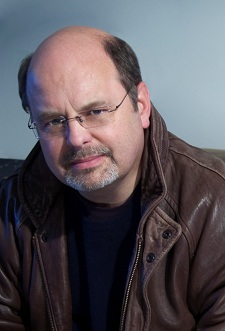

 Kathy Reichs
Kathy Reichs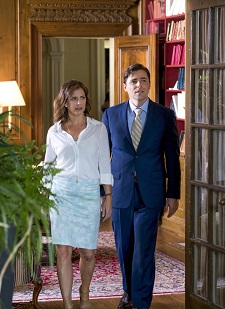

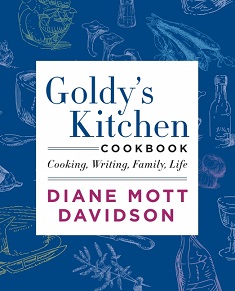


 Just try being calm when a burly stranger in a hockey mask brandishes a chain saw. Tough guys shove their girlfriends out of the way to escape; parents panic and abandon their children; customers lose control of their bladders or bowels. (And some haunts track those incidents for fun.) Most haunts use a real chain saw, too. They just leave off the chain and let the sound do the job.
Just try being calm when a burly stranger in a hockey mask brandishes a chain saw. Tough guys shove their girlfriends out of the way to escape; parents panic and abandon their children; customers lose control of their bladders or bowels. (And some haunts track those incidents for fun.) Most haunts use a real chain saw, too. They just leave off the chain and let the sound do the job.
